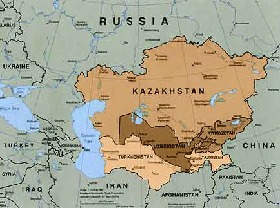
Malnutrition on the rise among rural Tajik children, UN warns
The UN Office for the Coordination of Humanitarian Affairs (OCHA) reported that nutrition levels of rural Tajik children “has been deteriorating significantly,” with the percentage of children under the age of five classified as underweight for their height almost doubling to more than 10 per cent between January and July this year.
The proportion of children of the same age group considered to be severely malnourished rose from 1.9 per cent to 4.3 per cent in the same period.
OCHA said poor water quality during the summer months - following heavy floods and mudslides in the spring - in Tajikistan has led to more frequent bouts of diarrhoea among local children.
Food prices in the mountainous Central Asian country have also been particularly high during and immediately after the last winter, while there has been a lack of available food as well.
OCHA warned that infectious disease rates are likely to rise because of the poor nutrition, and this could in turn lead to more prolonged and severe cases of diarrhoea and of respiratory illnesses.
Since September, to coincide with the start of the school year, the UN World Food Programme (WFP) has been providing daily hot meals to 360,000 children attending primary schools in rural Tajikistan.
The agency also delivers food to an estimated 260,000 Tajiks considered to be in hardship regions, and also to 15,000 tuberculosis patients and their families.
WFP provides a series of other forms of assistance, including take-home rations for schoolgirls, food-for-work projects and nutritional supplements for malnourished children and their mothers.